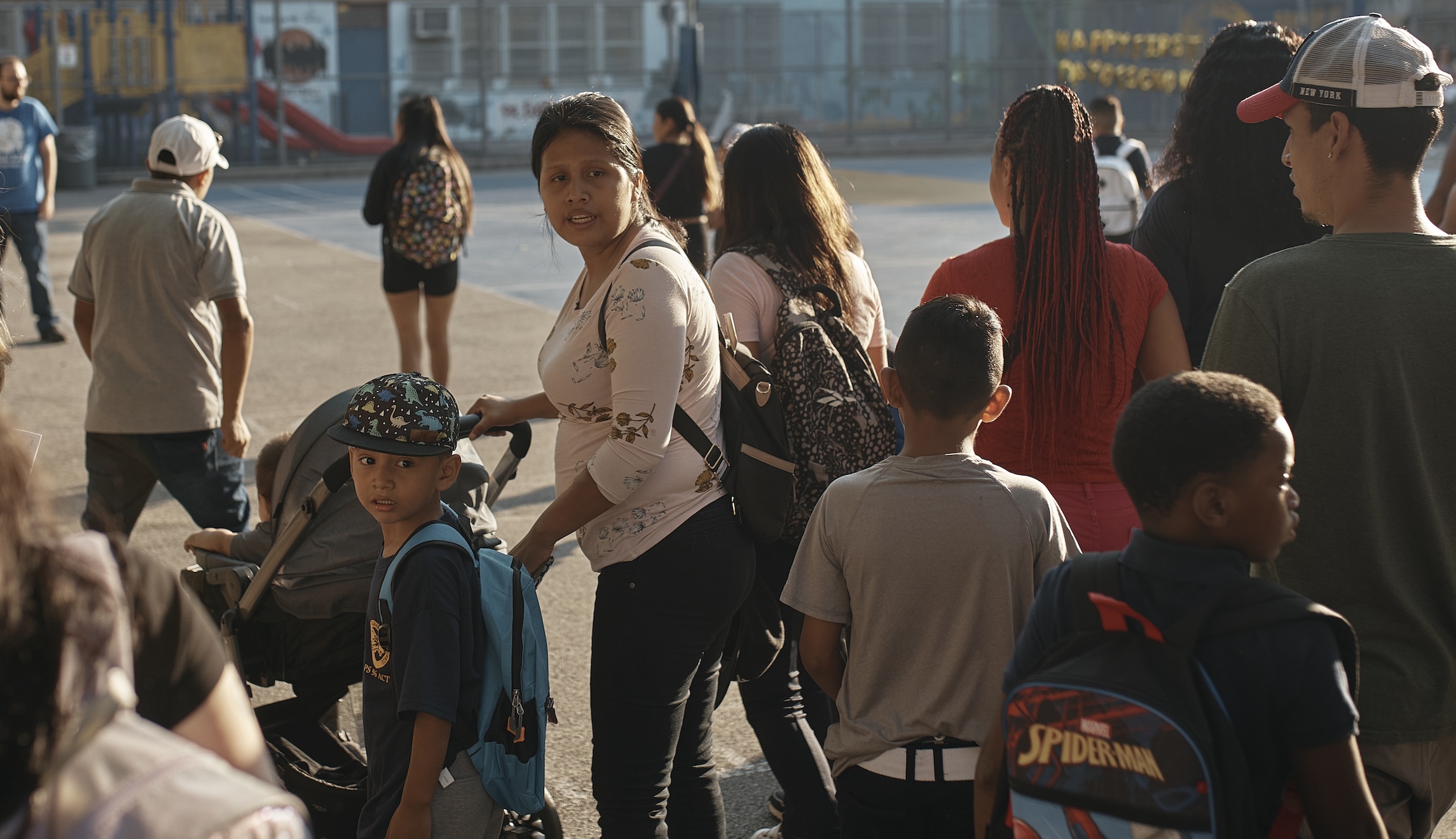

Tens of thousands of immigrant children who crossed the southern border alone and were released to an adult sponsor in the United States have been enrolled in public schools nationwide under President Joe Biden, putting educators in a bind.
Over the past three years, more than 8 million people have been encountered at the southern border, including nearly 500,000 unaccompanied children, which does not include children who arrived with a family member.
The impact of so many children arriving in the country and enrolling in schools nationwide has not been insignificant, according to immigration policy experts.
“Although the majority of U.S. schools receiving unaccompanied minors and other immigrant children are not new to serving this population, many educators have described the number of newcomers arriving in the 2023-24 school year as unprecedented,” said Julie Sugarman, associate director of K-12 education research at the Migration Policy Institute in Washington, in an email.
Children who come across the southern border are protected from immediate removal in most cases and will be transferred from Border Patrol custody to the Department of Health and Human Services. HHS will then look for a relative or parent in the U.S. to release the child as he or she awaits immigration proceedings years down the road, though the child may be let go to an unrelated adult if a family member cannot be found.
“They have a right — just like other children living in their community — to enroll in local schools regardless of their or their sponsors’ actual or perceived immigration or citizenship status,” the HHS website states. “State laws also require children to attend school up to a certain age.”
This particular influx of children into the country has caught educators by surprise.
Since Biden took office in early 2021, Department of Homeland Security data show that 464,000 children have crossed the border alone.
Of the 464,000, roughly 391,000 children have been released into the country between fiscal 2021 and January 2024. Fiscal 2021 began shortly before the November 2020 election while President Donald Trump was still in office.
Chicago Public Schools had registered between 12,000 and 14,000 immigrant children who arrived directly from the southern border, Democratic Alderman Raymond Lopez told the Washington Examiner. That represents roughly 4% of the district’s 323,000 student body population.
As of January, 34,000 of New York City’s 915,000 students enrolled were immigrant children who arrived from the border, roughly 3% of all students and not including illegal immigrant children who entered the country during the Trump and Obama administrations.
A new report from the conservative Washington think tank the Heritage Foundation concluded that New York spent millions of dollars to educate thousands of newly enrolled children from the border.
“In New York, 8,477 unaccompanied alien children were sent to sponsors, according to [Office of Refugee Resettlement] data. New York spends $28,261 per pupil, making the total additional cost to taxpayers close to $240 million for one year,” Heritage concluded in its February report.
School budgets are set the March before a school year begins, roughly six months ahead of time, and “administrators are stretched to accommodate new arrivals without having access to additional funds,” Sugarman said.
The “nearly constant flow of new arrivals” is difficult to manage because each student must be assessed for English language proficiency and academic level, then provided an orientation to the school system and new routines, Sugarman said. Most children do not arrive with school transcripts.
“The second challenging area for schools is that more new arrivals are coming with greater educational and socioemotional needs than educators have seen in the past. Many students — especially teenagers — arrive with limited or interrupted formal education, requiring intensive support, and others have trauma from experiences in their home country or during travel,” Sugarman explained.
Although schools work with social services agencies and nonprofit organizations to meet the language needs of students, qualified bilingual staff “may be in short supply.”
“About half of English Learner newcomers speak languages other than Spanish, so finding appropriate interpreters or training staff to use telephone interpretation services for those families can be more challenging,” she said.
CLICK HERE TO READ MORE FROM THE WASHINGTON EXAMINER
Jennifer Podkul, vice president for policy and advocacy at the child immigrant advocacy group Kids in Need of Defense, or KIND, said the U.S. government must consider how it is handling the arrivals of unaccompanied minors in the first place, including quickly adjudicating children’s claims.
“What can the U.S. be doing to help build child protection systems in these countries where kids are coming from so that they don’t have to leave in the first place?” Podkul said in a phone call. “How do we quickly get to the bottom of their story and figure out, ‘Is this really a child in need of international protection or is this a child who can be returned and go back to their community of origin and might just need a little bit of support to be successful there, whether that’s education or employment opportunities?’”







